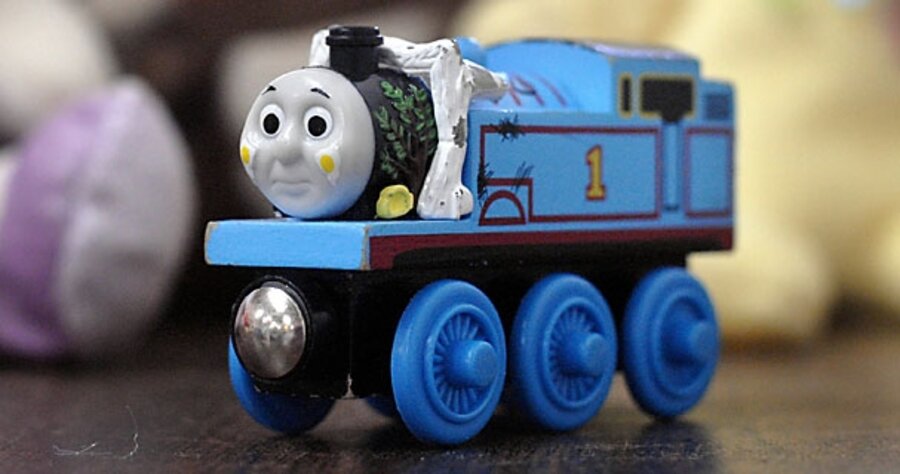End of toy story: Where do lead-tainted toys go?
Loading...
Q: There has been a lot of news about lead-tainted children’s toys being recalled. Where are these toys ending up, and are they creating pollution problems?
– Michael O’Laughlin, Tigard, Ore.
A: The biggest problem with the recall of millions of lead-tainted toys over the last few years has been getting shops and consumers to comply. According to Mattel, which has issued dozens of recalls in recent years (including some 2.2 million Chinese-made toys contaminated with lead paint), historically only about 6 percent of recalled toys are returned.
For those that do come back, Mattel sells or reuses the zinc and some of the resins they contain, and then recycles as many of the other components as possible, sending the lead to companies that specialize in the safe disposal of hazardous materials.
But what of the 94 percent of the recalled lead-tainted toys that don’t make it back to Mattel? Many of them, no doubt, found a comfortable home with a child somewhere long before word of the recall – ignored or missed by parents – got out. Of the remaining toys, some of those that were recalled in the summer of 2007 ended up on auction websites like eBay and business-to-business sites like Made-in-China.com – and then eventually into the hands of unwitting consumers, many of them overseas.
Unfortunately, there is still no federal law or regulation against reselling recalled toys, although some members of Congress are trying to change that. For its part, eBay has agreed to try to keep recalled products off its auction website, but enforcement can be a challenge.
The fact that lead-painted toys were for sale in the first place is the real shame. Scientists have linked children’s regular exposure to lead and lead paint to lower intelligence and other problems.
The good news is that such recalls are getting more exposure than ever, with better results. Illinois-based RC2 Corp. has already received more than 70 percent of the 1.5 million lead-tainted Thomas & Friends wooden railway toys it recalled last year.
While there is still no nationally accepted procedure governing the disposal or recycling of such items, individual companies are bound by the laws of their respective states regarding disposal of harmful materials.
Those who worry about lead leaching out of landfills and into groundwater and soils would like to see the federal government mandate strict safety rules for dealing with lead and other hazardous materials.
Consumers unsure about whether a particular toy or other item has been part of a recall should check it online at the “Recalls and Product Safety News” section of the US Consumer Product Safety Commission’s website.
If a given product has been recalled, you can probably return it to the store where you bought it and let them deal with the hassle of getting it to the manufacturer. If you know that an item was recalled because it contained hazardous materials, you can drop it off at your local municipal hazardous waste collection facility.
The website Earth911 provides a comprehensive national database of such facilities.
Got an environmental question? Write: EarthTalk, c/o E – The Environmental Magazine, Box 5098, Westport, CT 06881. Or e-mail: earthtalk@emagazine.com.





